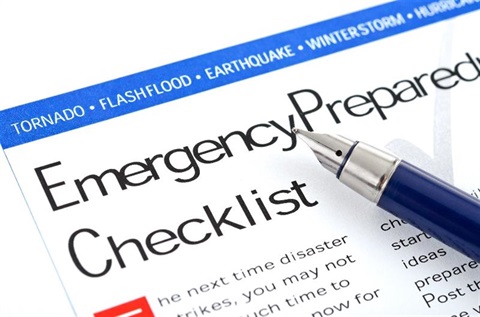The case for personal preparedness
Published on April 23, 2025

Emergencies can happen at any time. Disasters are unpredictable, but personal preparedness offers a sense of control in uncertain times. Individuals can enhance their chances of enduring emergencies with minimal hardship by planning, assembling essential supplies, and cultivating basic preparedness skills. You may be your own first responder in the first hours and days following a crisis. Acting today can make all the difference tomorrow.
Follow these important steps to ensure you and your family are prepared:
- Stay Informed – Sign up for CodeRed alerts now. Don’t miss any important messages from the Emergency Management team as a situation develops. You can also listen to the AM 1610 radio station for updates.
- Create a 72-Hour Kit – In many disaster scenarios, emergency response services may be overwhelmed, and it could take days before assistance reaches you. Preparing a 72-hour Emergency Kit ensures that individuals have the essentials to sustain themselves until help arrives. For more information about building a disaster supplies kit, visit the Ready.gov website. Include these essential items when building your kit:
o Water – At least one gallon per person daily for drinking and sanitation (don’t forget your pets).
o Food – Non-perishable items such as energy bars, canned goods, and dried foods. Remember to include pet food.
o First Aid Kit – Bandages, antiseptics, pain relievers, and any necessary prescription medications.
o Flashlights & Batteries – Reliable light sources in case of power outages.
o Radio – A battery-operated or hand-crank radio to receive emergency updates via AM 1610.
o Multi-tool or Knife – Useful for a variety of survival tasks.
o Hygiene Items – Toilet paper, hand sanitizer, soap, and other personal hygiene supplies.
o Extra Clothing & Blankets – Suitable for the climate and potential weather conditions.
o Cash & Important Documents – Small bills, identification, insurance policies, and emergency contact information.
o Emergency Shelter – A small tent or tarp to provide protection from the elements.
- Remember the 7 P’s of Preparedness and Evacuation Readiness – A fundamental principle in disaster readiness is the “7 P’s of Preparedness”: Proper Prior Planning and Preparation Prevents Poor Performance. This mantra underscores the need to anticipate potential risks and take proactive steps before disaster strikes. With adequate preparation, you and your family can navigate crises more effectively and reduce the risks of severe consequences. Keep these items in mind when faced with the need to evacuate:
o People
o Pets
o Prescriptions
o Pictures
o Personal Computers
o Phone
o Papers (important documents like social security cards, birth certificates, insurance papers, and property deeds)
Beyond the Basics: Additional Preparedness Considerations
While a 72-hour kit and a checklist of the 7 P’s of Preparedness are a great starting point, comprehensive preparedness involves more than just supplies. Here are additional steps to take:
- Develop a Family Communication Plan – Establish ways to contact family members if cell service is down. Identify a pre-determined location you will meet if you cannot contact each other.
- Know Evacuation Routes – Familiarize yourself with escape routes.
- Financial Preparedness – Have an emergency savings fund and keep some cash on hand in case ATMs are inaccessible.
- Community Involvement – Establishing connections with neighbors can provide mutual support during disasters.
- Homeowners’ or renters’ insurance - Ensuring your policy covers natural disasters, theft, and other potential threats.
Post-Disaster Considerations
Surviving a disaster is only the first challenge. The aftermath can be just as perilous. Post-disaster planning should include:
- Conserving Resources – Ration food, water, and medical supplies until more become available.
- Maintaining Hygiene and Sanitation – Avoid contamination and prevent disease outbreaks.
- Mental Health Care – Disasters can take an emotional toll. Seeking support and maintaining mental resilience is key to recovery.
The Reality of Disaster Relief
Many people mistakenly believe that the Federal Emergency Management Agency (FEMA) will fully restore what was lost after a disaster. There are very few avenues offered to individuals by FEMA or any other local or state government for recovery post-disaster. Having proper homeowners or renters’ insurance remains the best route for recovering personal losses. Ensuring you have an inclusive insurance policy can help you rebuild faster. For more information on FEMA’s Individual Assistance post-disaster click here.
In an unpredictable world, the importance of personal preparedness cannot be overstated, especially regarding natural disasters. Natural disasters, economic crises, and unforeseen emergencies have proven time and again that relying solely on government aid or external assistance is not a viable survival strategy. The responsibility of ensuring one’s safety, both pre- and post-disaster, ultimately falls on the individual. Having a well-thought-out plan and the necessary supplies can mean the difference between survival and struggle.
If you have questions about emergency preparedness, don’t hesitate to contact us at the Office of Emergency Management, LACOEM@lacnm.us.